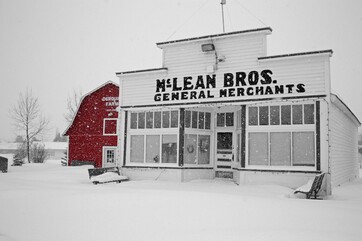
The McLean Bros. Store
Originally built on Gibbons' main street by Jack and Joe McLean in 1924, the McLean Bros. Mercantile Store served the residents of Gibbons for over 60 years. Nick Konsorado began working at the store as a clerk in 1929, and later bought the store with his wife in 1944. Nick and Mona operated the store under its original name. It was later bought and donated to the museum by Tom Walter in 1990.
At the museum you can continue to see the store filled with general goods that would have been sold there throughout its time as a functioning general store.
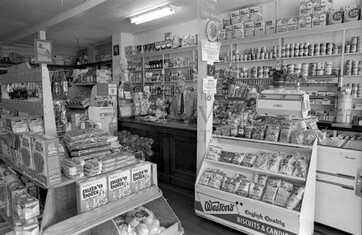
McLean Bros store in 1982 when it was still owned and operated by the Konsorado's. Photo from the Provincial Archives of Alberta.
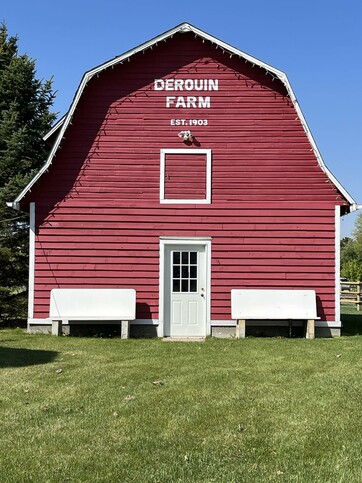
Derouin Barn
The Derouin Barn is the most modern of our historic buildings at the museum. It was built by Richard Derouin and Henry Demers in 1949. The barn was donated to the museum in 2007 and relocated to the museum grounds. The museum uses the barn to display farming tools and equipment, and to accommodate special events and activities.
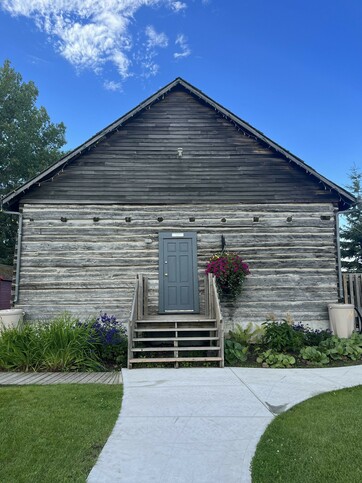
Reverend Roberts' House
This two-storey log house was constructed in 1907 southeast of Gibbons. It was the home of Reverend Orlando James Roberts and his family. The house became the Gibbons Museum's first building when it was donated in 1980 by Eric Able and his wife. Some local residents may remember this building as Able's Honey House. Before donating it to the Museum, this building was on the Able farm where the Able's would teach the local kids how to make honey. Upon its relocation to the museum site, the house was insulated, powered, and heated. The main floor was transformed into an exhibit space, while the upstairs became an office space for the museum.
The Roberts Family
Reverend Roberts and his wife Connie had five children: Fred, Alexander, Malcolm, Edyth, and Constance. The family worked as missionaries and Reverend Roberts became the Pastor for the Emmanuel Anglican Church. He served the communities of Gibbons, Bon Accord, and Redwater until his death in 1938. Connie and their daughter Constance often made the long walk to Edmonton and back. Their son Fred became one of the first teachers in the area. All three sons served in the Canadian Army. Fred died in France in WW1 while Alexander and Malcolm served in both WW1 and WW2 and safely returned home.
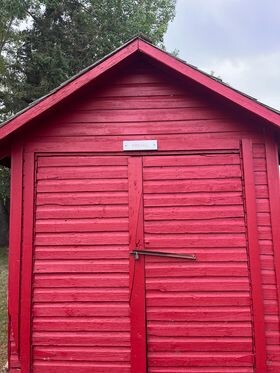
The Gibbons Fire Hall
After a fire in 1939 that destroyed multiple businesses in Gibbons, business owners established the Gibbons Volunteer Fire Fighting Unit (GVFFU). It was the first fire fighting unit in what is now Sturgeon County. The GVFFU fire hall consisted of a small frame shed which housed the chemical cart for extinguishing fires. After Gibbons became a village in 1959, the GVFFU became the Gibbons Volunteer Fire Department. A new Fire Hall was built in 1967.
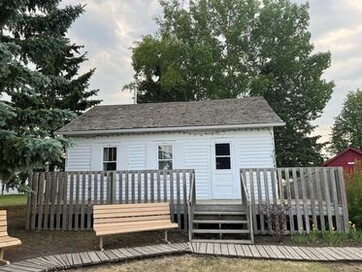
McWhirter House
Built in 1947, this building was the home of Harvey and Gladys McWhirter and their three children. The three room home was originally set up to have two bedrooms and a kitchen; however, the museum has decided to showcase one of the bedrooms as a sitting room. The home was donated to the museum in 1986. The windmill in the museum yard also belonged to the McWhirter family. It was built in 1920 by Ivie and Elizabeth.
The McWhirter Family
Harvey was the son of Ivie and Elizabeth McWhirter. Ivie and Elizabeth moved to Gibbons in 1915 with their first daughter Bernice. Harvey and three other children were born in Gibbons, but unfortunately two passed away as infants and another at age 21. Only Harvey and Bernice survived to adulthood. The McWhirter family made a living by selling milk, cream, and butter in Edmonton which they transported by horse and buggy. In the winter Harvey and Bernice travelled to school on a horse drawn sleigh, picking up other Gibbons children on their way.
Harvey married Gladys Salisbury in 1940. The lived in the house now located at the museum with their three sons: Clayton, Ross, and Grant.
